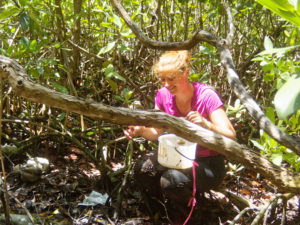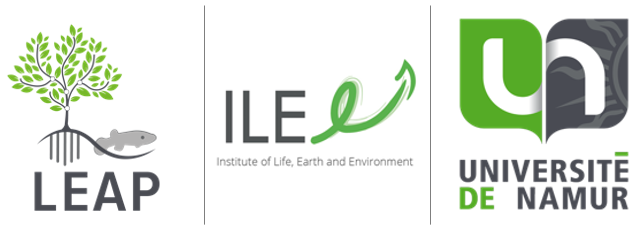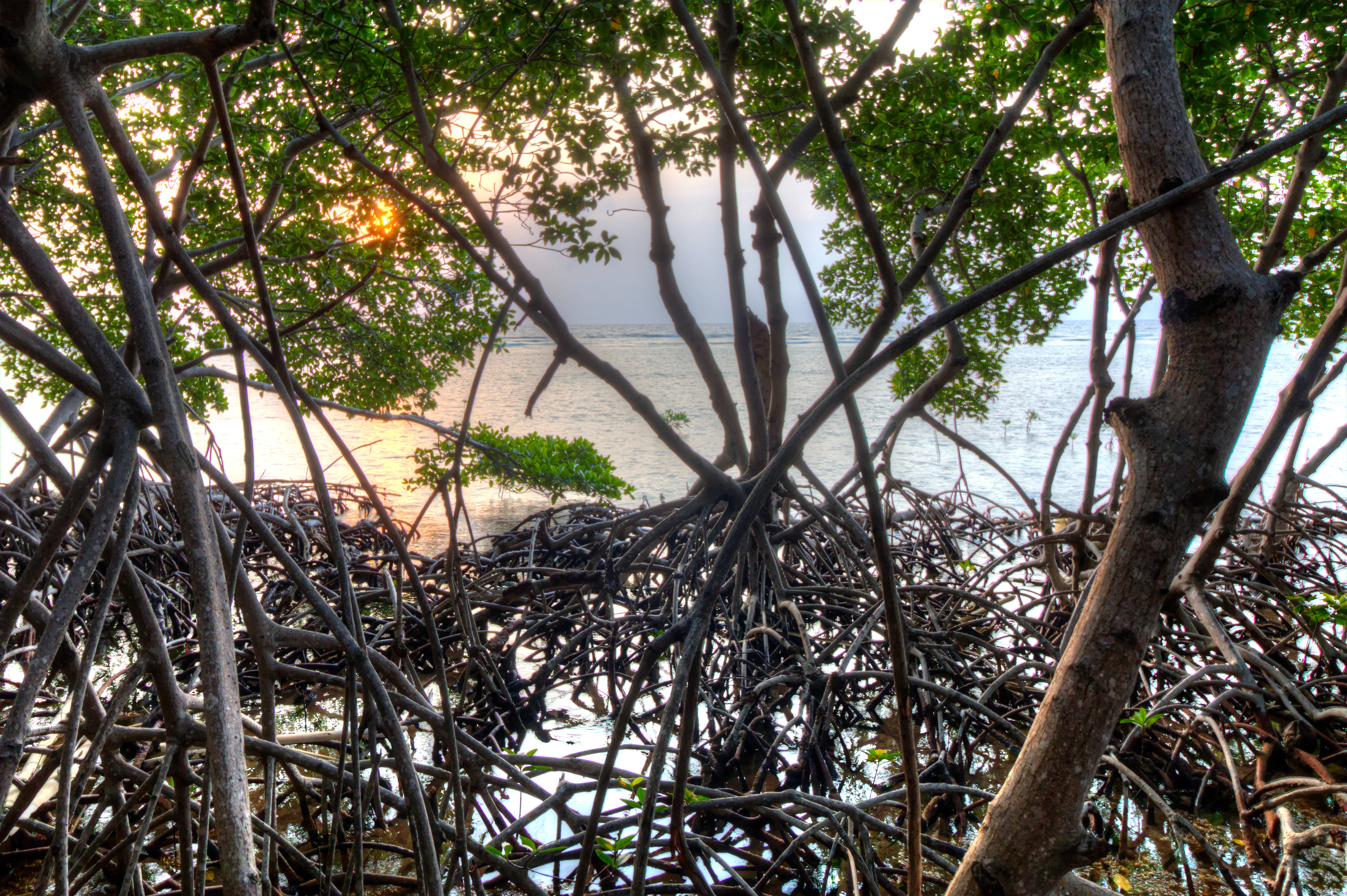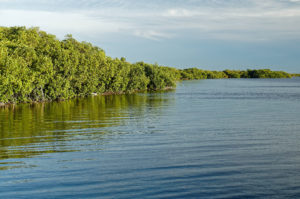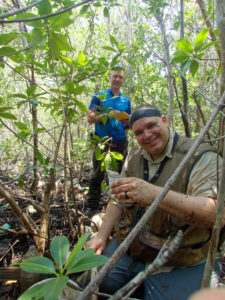
In May 2019, Frédéric Silvestre and Valentine Chapelle organized a field trip to Belize to work on mangrove rivulus. This mission was dedicated to investigate two populations of mangrove rivulus: on Twin Caye and on Long Caye. The one from Twin Caye (in South Water Marine Reserve) is exceptional. It shows the higher rate of cross-fertilization in the world, and consequently the highest genetic diversity. In other populations, these fish are highly homozygous and isogenic because of the very low rate of males, whiles we can find 99% of hermaphrodites. The « herms » can fertilize themselves, which is unique for a vertebrate. In this project, we will compare the phenotypic variability between the 2 populations, and later on with 2 other populations in Florida (another mission in coming July). The phenotype is analyzed at the behavioral level with 2 personality assays to test the exploration and boldness of each individual. We proceed each test in duplicate to calculate the repeatability. On the field, we trap both males and « herms » to calculate a sex ratio. After the behavioral assays, we sample the brain, liver and gonads to bring them back in Belgium to proceed epigenetic and genetic analyses. Our working hypothesis is that there is a gradient of epigenetic variability, exactly reverse to the observed gradient of genetic variability. That would permit the fish to express diverse phenotypes, even in the absence of genetic diversity. The alternative hypothesis is that fish with higher genetic diversity show more phenotypic variability and that epigenetics does not interfere. Moreover, specific epigenetic markers will be searched for each population. Epigenetics is currently a hot spot in science, but its evolutionary and adaptive power is still under debate. That’s the final goal of our project and of Valentine Chapelle’s PhD.
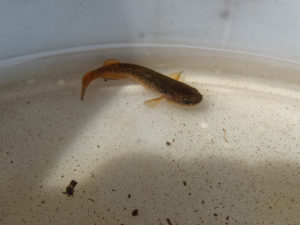
After 8 full days on South Water Caye, we could catch with Ryan Earley and Kristy Marson a total of 380 mangrove rivulus that were released after taking the size, weight, sex and a DNA sample. We brought back 40 fish in our « field lab » to test the behavior. Four sites were investigated on Twin Caye. Two of them (East and West) showed the highest rate of males (about 40%), while two other sites (North and South) showed about 25% of males. This difference on a single island is questioning and further hypothesis will be tested. We collected a total of 47h of video records and hand carried more than 2400 L of sea water from the sea to our lab. Lastly, we sampled 40 brain, liver and gonads. This mission is already a great success and we’re looking forward to analyse all the video and proceed the molecular stuff.
